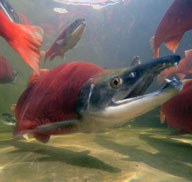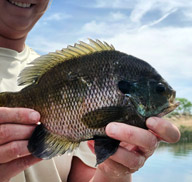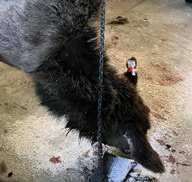Where to see Utah's spawning kokanee salmon
- Details
- Published: Thursday, August 29, 2019, 9:21 am
 I try to get my family outdoors every weekend, and fall is one of our favorite times to go exploring. In recent years, we've made it a tradition to watch Utah's kokanee salmon as they run up the rivers to lay their eggs. In the past, we've enjoyed kokanee-watching at Strawberry and Sheep Creek, but I haven't quite decided where we'll go this year. Fortunately, there are a lot of great options!
I try to get my family outdoors every weekend, and fall is one of our favorite times to go exploring. In recent years, we've made it a tradition to watch Utah's kokanee salmon as they run up the rivers to lay their eggs. In the past, we've enjoyed kokanee-watching at Strawberry and Sheep Creek, but I haven't quite decided where we'll go this year. Fortunately, there are a lot of great options!

 I'm an avid angler, but I'm also an old baseball player, and all baseball players are a little superstitious about keeping a hot streak going. Fishing is much the same. I have had success over the years and always kept track of what worked and what didn't. I've changed my fishing behavior to match those most successful times and have even convinced the folks who fish with me.
I'm an avid angler, but I'm also an old baseball player, and all baseball players are a little superstitious about keeping a hot streak going. Fishing is much the same. I have had success over the years and always kept track of what worked and what didn't. I've changed my fishing behavior to match those most successful times and have even convinced the folks who fish with me. As a kid, Pelican Lake was the most fun place you could fish in the whole world. I vividly remember days of catching so many bluegill and bass that my thumb was raw from taking them off the hook. Now, as a regional fisheries biologist in my hometown, it's my job to restore this fishery to its past glory.
As a kid, Pelican Lake was the most fun place you could fish in the whole world. I vividly remember days of catching so many bluegill and bass that my thumb was raw from taking them off the hook. Now, as a regional fisheries biologist in my hometown, it's my job to restore this fishery to its past glory. I was ready to call it a day after hours of checking anglers on Strawberry Reservoir. I had officially been patrolling for three weeks, and I was learning my way around the reservoir. Just as we packed in all of our gear, a call came over the radio.
I was ready to call it a day after hours of checking anglers on Strawberry Reservoir. I had officially been patrolling for three weeks, and I was learning my way around the reservoir. Just as we packed in all of our gear, a call came over the radio.

 It can be said that the "lure of the West" is native trout. They are the embodiment of the Western character — its eternal struggle and triumph of adaptation to a life of water in a dry land.
It can be said that the "lure of the West" is native trout. They are the embodiment of the Western character — its eternal struggle and triumph of adaptation to a life of water in a dry land.  Spring means all kinds of walleye activity around these parts, and we're pretty excited about it. Our aquatic biologists are currently in the middle of spawning operations out at Willard Bay, preparing to grow millions of sterile walleye to plant into waters throughout the state.
Spring means all kinds of walleye activity around these parts, and we're pretty excited about it. Our aquatic biologists are currently in the middle of spawning operations out at Willard Bay, preparing to grow millions of sterile walleye to plant into waters throughout the state. I heard my husband yell, "Look at that!" I turned and looked toward where he was pointing and saw a 2-foot, yellow-and-black reptile slowly crawling across the ground to the right of me. I gasped at how large it was — and because I'd never seen one and had no idea what it was.
I heard my husband yell, "Look at that!" I turned and looked toward where he was pointing and saw a 2-foot, yellow-and-black reptile slowly crawling across the ground to the right of me. I gasped at how large it was — and because I'd never seen one and had no idea what it was. It may be a long way from Africa, but Utah has its own little Serengeti where herds of deer and elk roam. As a wildlife biologist for the Utah Division of Wildlife Resources (UDWR) I've flown over a hundred wildlife surveys during the last quarter century. It was on one of those long days of flying in a helicopter counting elk that I began to realize how amazing this area really was.
It may be a long way from Africa, but Utah has its own little Serengeti where herds of deer and elk roam. As a wildlife biologist for the Utah Division of Wildlife Resources (UDWR) I've flown over a hundred wildlife surveys during the last quarter century. It was on one of those long days of flying in a helicopter counting elk that I began to realize how amazing this area really was.











